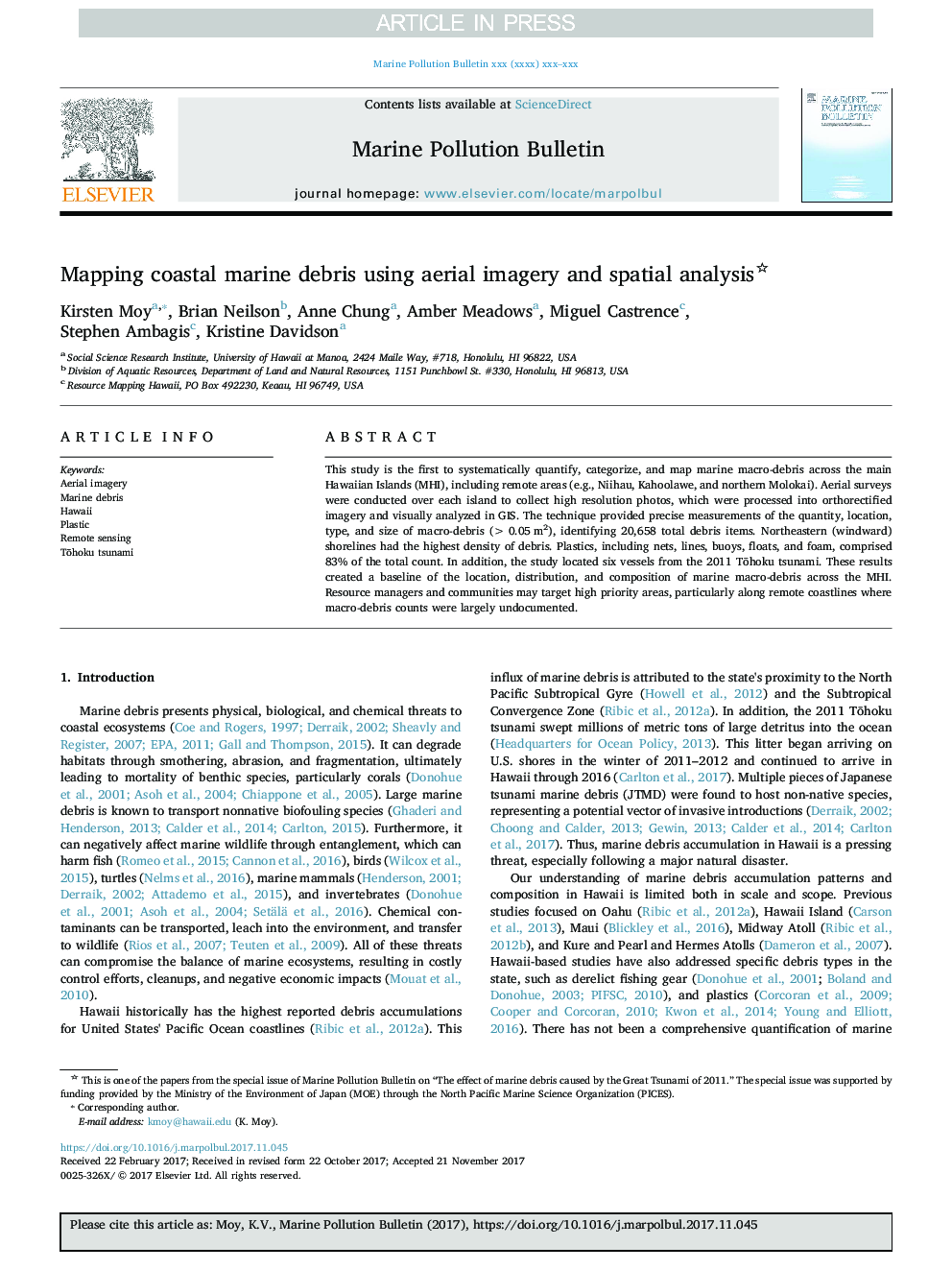| Article ID | Journal | Published Year | Pages | File Type |
|---|---|---|---|---|
| 8870873 | Marine Pollution Bulletin | 2018 | 8 Pages |
Abstract
This study is the first to systematically quantify, categorize, and map marine macro-debris across the main Hawaiian Islands (MHI), including remote areas (e.g., Niihau, Kahoolawe, and northern Molokai). Aerial surveys were conducted over each island to collect high resolution photos, which were processed into orthorectified imagery and visually analyzed in GIS. The technique provided precise measurements of the quantity, location, type, and size of macro-debris (>Â 0.05Â m2), identifying 20,658 total debris items. Northeastern (windward) shorelines had the highest density of debris. Plastics, including nets, lines, buoys, floats, and foam, comprised 83% of the total count. In addition, the study located six vessels from the 2011 TÅhoku tsunami. These results created a baseline of the location, distribution, and composition of marine macro-debris across the MHI. Resource managers and communities may target high priority areas, particularly along remote coastlines where macro-debris counts were largely undocumented.
Related Topics
Physical Sciences and Engineering
Earth and Planetary Sciences
Oceanography
Authors
Kirsten Moy, Brian Neilson, Anne Chung, Amber Meadows, Miguel Castrence, Stephen Ambagis, Kristine Davidson,
